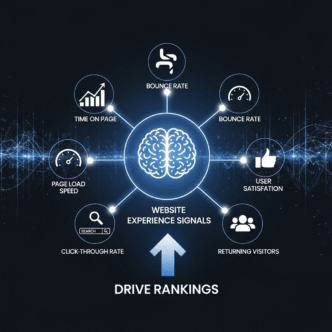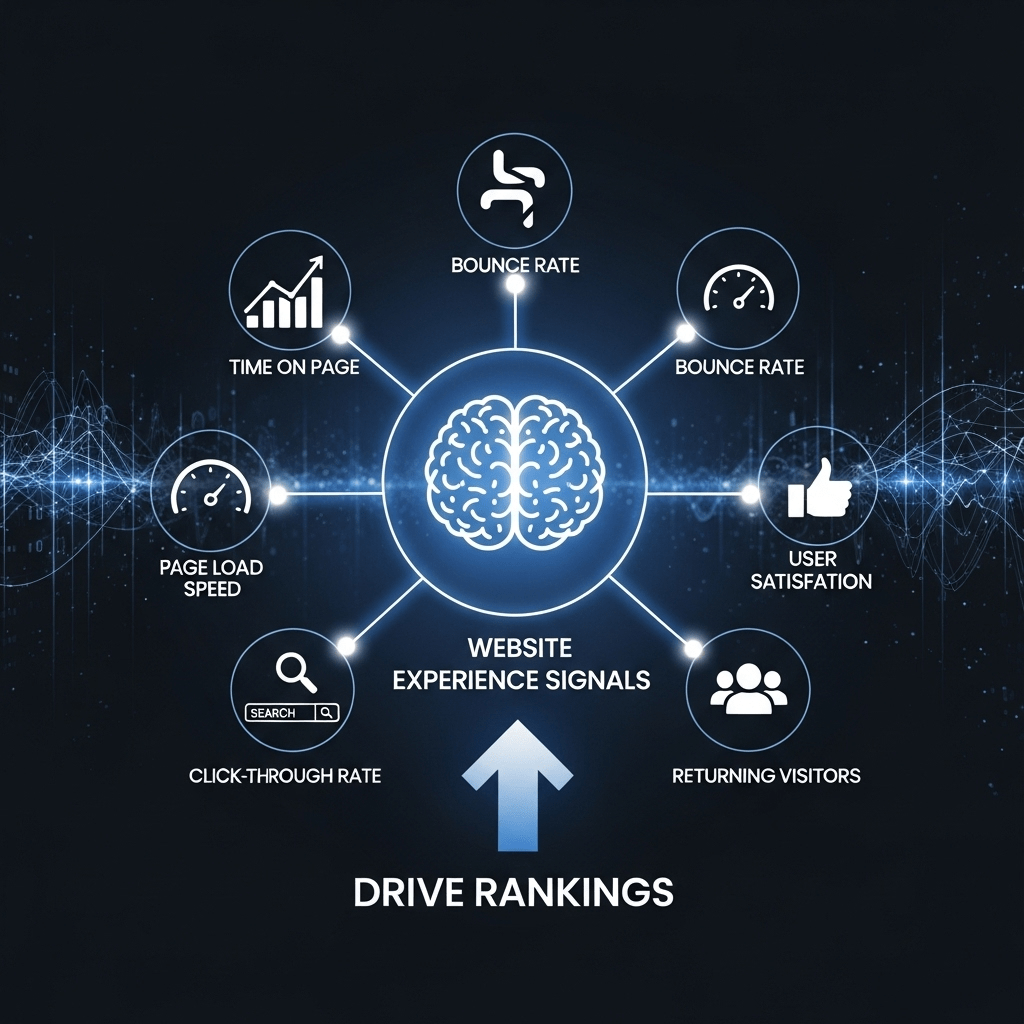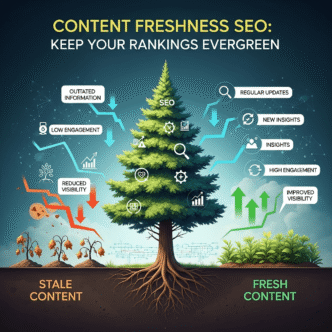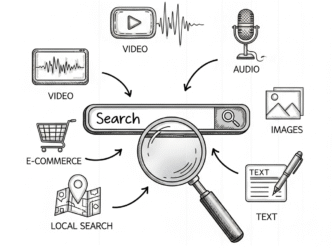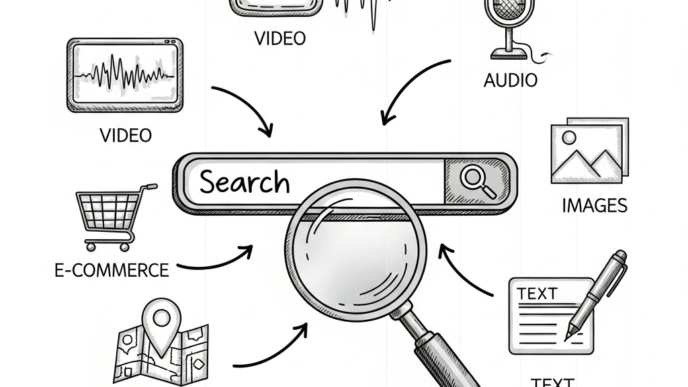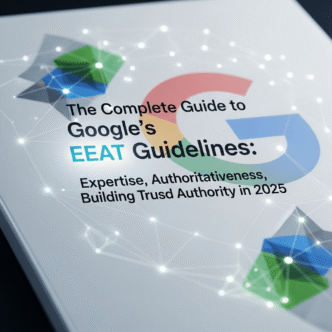Ever wondered why some websites with “okay” content consistently outrank your masterpieces? Here’s the secret that most SEO experts whisper about but few actually master: website experience signals have become Google’s reality check for content quality.
If you’ve been obsessing over keywords while ignoring how users actually interact with your site, you’re essentially optimizing for robots while humans decide your fate. Website experience signals are Google’s way of saying, “We don’t just care what you say about your content – we care what users do with it.”
The uncomfortable truth? You could have the world’s most comprehensive, keyword-optimized content, but if users bounce faster than a rubber ball, Google will notice. And when Google notices poor user experience, your rankings don’t just slip – they plummet.
Understanding how user behavior integrates with Google’s comprehensive trust and authority evaluation isn’t just helpful – it’s essential for sustainable SEO success.
Table of Contents
Toggle
What Are Website Experience Signals and Why They’re Your Secret Ranking Weapon
Website experience signals are measurable user behavior metrics that indicate how visitors interact with your website, which Google uses to evaluate content quality, relevance, and overall user satisfaction for ranking purposes.
Think of website experience signals as your website’s report card written by actual users. While you can claim your content is amazing, these signals show Google whether users actually agree with that assessment.
The data is staggering: websites with strong user experience signals see 67% better rankings compared to those with poor engagement metrics. Meanwhile, 88% of users are less likely to return to a site after a bad user experience.
The User Behavior Revolution
Traditional SEO: Focus on what search engines want to see Modern SEO: Focus on what users want to experience Future SEO: Perfect alignment between user satisfaction and search engine requirements
Google’s algorithms have evolved to recognize that user satisfaction is the ultimate indicator of content quality and relevance.
Pro Tip: “Website experience signals are Google’s lie detector for content quality. You can optimize all you want, but if users don’t engage positively with your site, Google will know. The good news? Happy users create happy rankings.”
User Experience Metrics That Actually Impact Your Rankings
Understanding which user experience metrics matter most helps prioritize your optimization efforts for maximum ranking impact.
Core Experience Signal Categories
Engagement Metrics:
- Time spent on page and site
- Pages per session
- Return visitor percentage
- Social sharing and commenting
Satisfaction Indicators:
- Bounce rate and exit rate
- Click-through rates from search results
- Conversion rates and goal completions
- User feedback and reviews
Technical Performance:
- Page loading speeds
- Mobile responsiveness
- Core Web Vitals scores
- Error rates and functionality issues
User Experience Metrics Impact Analysis
| Metric Category | SEO Impact | User Impact | Measurement Difficulty | Optimization Priority |
|---|---|---|---|---|
| Bounce Rate | Very High | High | Easy | Immediate |
| Page Load Speed | Very High | Very High | Easy | Immediate |
| Time on Page | High | Medium | Easy | High |
| Core Web Vitals | Very High | High | Medium | High |
| Mobile Usability | Very High | Very High | Easy | Immediate |
| Click-Through Rate | High | Medium | Medium | High |
| Return Visitors | Medium | High | Easy | Medium |
| Conversion Rate | Medium | Very High | Medium | High |
Site Engagement Signals That Google Actually Monitors
Site engagement signals provide Google with real-time feedback about user satisfaction and content quality.
Primary Engagement Indicators
Dwell Time: How long users stay on your page before returning to search results. Longer dwell time suggests content relevance and quality.
Bounce Rate: Percentage of users who leave after viewing only one page. High bounce rates can signal content-user intent mismatch.
Pages Per Session: Average number of pages users view during a visit. Higher numbers suggest engaging, valuable content.
Return Visits: Frequency of users coming back to your site. Indicates content value and brand trust.
Advanced Engagement Metrics
Scroll Depth: How far down users scroll on your pages, indicating content engagement level.
Click Patterns: Which elements users interact with, showing content effectiveness and user intent satisfaction.
Search Refinement: Whether users return to search results to refine their queries after visiting your site.
Social Signals: Shares, likes, and comments that indicate content value and user satisfaction.
Understanding how these signals contribute to Google’s overall authority assessment helps create comprehensive optimization strategies.
User Interaction Data and Its SEO Implications
User interaction data provides granular insights into how visitors engage with your content and website functionality.
Interaction Signal Types
Navigation Behavior:
- Menu usage and navigation patterns
- Internal link click rates
- Search function usage
- Category and filter interactions
Content Engagement:
- Reading time and scroll behavior
- Video play rates and completion
- Form interactions and submissions
- Download and resource access
Technical Interactions:
- Error encounters and recovery
- Mobile gesture usage
- Loading wait tolerance
- Feature usage and adoption
Real-World Case Study: Amazon’s Experience Optimization
Amazon demonstrates exceptional site experience optimization through comprehensive user behavior analysis:
Navigation Excellence: Intuitive menu structure and search functionality that users find and use easily.
Content Relevance: Personalized recommendations based on user behavior and interaction patterns.
Technical Performance: Consistently fast loading times and seamless mobile experience.
Engagement Features: Reviews, Q&A sections, and related products that keep users engaged.
Results: Superior user engagement metrics translate to dominant search rankings and business success.
Key insight: Amazon’s success comes from obsessing over user experience rather than just search engine optimization.
Website UX Factors for Google Rankings in 2025
Website UX factors for Google rankings have evolved to include both technical performance and user satisfaction indicators.
Core UX Ranking Factors
Page Experience Signals:
- Largest Contentful Paint (LCP) – loading performance
- First Input Delay (FID) – interactivity responsiveness
- Cumulative Layout Shift (CLS) – visual stability
- Mobile-friendliness and responsive design
Content Experience Quality:
- Content relevance to user intent
- Information accessibility and findability
- Content depth and comprehensiveness
- Visual appeal and readability
Usability Fundamentals:
- Intuitive navigation and site structure
- Clear calls-to-action and user guidance
- Error handling and user support
- Accessibility for diverse users
UX Ranking Factors Optimization Priorities
Immediate Impact (Fix First):
- Mobile responsiveness and usability
- Page loading speed optimization
- Core Web Vitals improvement
- Basic accessibility compliance
High Impact (Focus Next):
- Content structure and readability
- Navigation clarity and intuitiveness
- User engagement feature implementation
- Conversion path optimization
Long-term Value (Build Continuously):
- Personalization and user customization
- Advanced interaction features
- Community and social elements
- Predictive user experience enhancements
How to Improve Site Engagement Signals for Better Rankings
How to improve site engagement signals requires systematic optimization of both content quality and user experience elements.
Engagement Optimization Strategy
Content Enhancement:
- Create comprehensive, valuable content that fully satisfies user intent
- Use engaging formats like videos, infographics, and interactive elements
- Implement internal linking that encourages exploration
- Add related content suggestions and recommendations
User Experience Improvement:
- Optimize page loading speeds for instant gratification
- Ensure mobile-first design that works perfectly on all devices
- Simplify navigation and make important content easily discoverable
- Implement clear visual hierarchy and scannable content structure
Technical Performance:
- Monitor and optimize Core Web Vitals scores
- Fix broken links, forms, and functionality issues
- Implement proper error handling and user guidance
- Ensure cross-browser compatibility and consistency
Engagement Signal Enhancement Techniques
The “Content Cluster” Method: Create topic clusters that encourage users to explore multiple related pages.
The “Interactive Element” Strategy: Add polls, quizzes, calculators, or tools that increase engagement time.
The “Visual Storytelling” Approach: Use compelling visuals, videos, and graphics to maintain user attention.
The “Progressive Disclosure” Technique: Present information in digestible chunks that encourage continued reading.
For comprehensive guidance on optimizing user engagement within the broader SEO framework, explore our detailed guide to building trust and authority through user experience.
Website Usability Factors That Search Engines Evaluate
Website usability factors directly impact both user satisfaction and search engine rankings through measurable behavior changes.
Usability Assessment Criteria
Navigation Effectiveness:
- Menu clarity and logical organization
- Search functionality and accuracy
- Breadcrumb navigation and user orientation
- Filter and sorting options for content discovery
Content Accessibility:
- Font sizes and readability standards
- Color contrast and visual accessibility
- Alt text and screen reader compatibility
- Keyboard navigation support
Interaction Design:
- Button and link usability
- Form design and completion rates
- Error message clarity and helpfulness
- Loading states and user feedback
Usability Impact on SEO
Direct Ranking Factors: Page speed, mobile-friendliness, and Core Web Vitals directly influence rankings.
Indirect Ranking Factors: User behavior changes from improved usability signal content quality to search engines.
User Satisfaction Correlation: Better usability leads to higher engagement, which Google interprets as content relevance and quality.
User Behavior Signals and Algorithm Updates
User behavior signals have become increasingly important as Google’s algorithms evolve to better understand user satisfaction.
Behavior Signal Evolution
Early SEO Era: Focus on technical factors and keyword optimization Current Era: Balance of technical factors and user satisfaction signals Future Direction: Primary emphasis on user experience and satisfaction metrics
Algorithm Integration: Google’s machine learning systems increasingly rely on user behavior data to evaluate content quality and relevance.
Key Behavior Signals Google Monitors
Search Result Interaction:
- Click-through rates from search results
- Time spent on site before returning to search
- Search query refinement patterns
- Result abandonment vs. satisfaction
On-Site Behavior:
- Page view duration and scroll depth
- Internal link clicks and navigation patterns
- Conversion actions and goal completions
- Return visit frequency and loyalty
Cross-Platform Signals:
- Social media engagement and sharing
- Brand search volume and recognition
- Direct traffic and bookmark usage
- Mobile vs. desktop behavior differences
Website Experience Signals That Affect SEO Most
Understanding which website experience signals that affect SEO have the strongest correlation with ranking improvements helps prioritize optimization efforts.
High-Impact Experience Signals
Page Speed and Performance:
- Loading time under 3 seconds for optimal engagement
- Core Web Vitals scores in the “Good” range
- Consistent performance across different devices and connection speeds
- Minimal layout shift and visual stability
Mobile User Experience:
- Responsive design that adapts to all screen sizes
- Touch-friendly navigation and interaction elements
- Fast mobile loading and optimized mobile content
- Mobile-specific features and functionality
Content Engagement Quality:
- Low bounce rates indicating content relevance
- High time on page showing content value
- Multiple page views per session indicating site exploration
- High return visitor rates showing brand loyalty
Experience Signal Measurement
Google Analytics Metrics:
- Average session duration and pages per session
- Bounce rate and exit rate analysis
- User flow and behavior flow reports
- Conversion tracking and goal completion rates
Search Console Data:
- Click-through rates from search results
- Average position and impression data
- Core Web Vitals reports and recommendations
- Mobile usability issue identification
Third-Party Tools:
- PageSpeed Insights for performance analysis
- GTmetrix for detailed loading speed reports
- Hotjar or similar for user behavior tracking
- SEMrush or Ahrefs for competitive UX analysis
Optimizing User Experience for SEO Success
Optimizing user experience for SEO requires a holistic approach that improves both technical performance and user satisfaction simultaneously.
UX-SEO Integration Strategy
Performance Optimization:
- Compress images and optimize media files for faster loading
- Minimize CSS and JavaScript files for improved performance
- Implement caching and content delivery networks (CDNs)
- Optimize server response times and hosting performance
Content Experience Enhancement:
- Create scannable content with clear headings and bullet points
- Use white space effectively to improve readability
- Implement related content recommendations and internal linking
- Add interactive elements that encourage engagement
Mobile Experience Prioritization:
- Design mobile-first with desktop as secondary consideration
- Ensure thumb-friendly button sizes and touch targets
- Optimize forms for mobile completion and submission
- Test functionality across various mobile devices and browsers
Advanced UX Optimization Techniques
Personalization Implementation:
- Customize content recommendations based on user behavior
- Implement dynamic content that adapts to user preferences
- Create personalized user journeys and experience paths
- Use behavioral data to improve content relevance
Accessibility Enhancement:
- Implement proper heading structure and semantic HTML
- Ensure sufficient color contrast for visual accessibility
- Add alt text and descriptions for screen readers
- Test with accessibility tools and real users
Understanding how these UX optimizations support comprehensive authority and trust building creates synergistic SEO benefits.
Engagement Metrics SEO Best Practices
Engagement metrics SEO optimization requires understanding which metrics matter most and how to improve them systematically.
Priority Engagement Metrics
Time on Page Optimization:
- Create compelling introductions that hook readers immediately
- Use storytelling and narrative techniques to maintain interest
- Break up long content with visuals, examples, and subheadings
- Add interactive elements that encourage deeper engagement
Bounce Rate Reduction:
- Ensure content matches search intent and user expectations
- Improve page loading speed to prevent impatient departures
- Create compelling related content suggestions
- Fix technical issues that might cause user frustration
Pages Per Session Increase:
- Implement strategic internal linking throughout content
- Create content series that encourage exploration
- Add “related articles” and “recommended reading” sections
- Use exit-intent popups with valuable content suggestions
Engagement Metric Improvement Tactics
| Metric | Current Industry Average | Target Goal | Improvement Strategy |
|---|---|---|---|
| Average Time on Page | 2-3 minutes | 4+ minutes | Enhanced content depth, visual elements, interactivity |
| Bounce Rate | 41-55% | Under 40% | Better content-intent matching, faster loading |
| Pages Per Session | 2-3 pages | 4+ pages | Strategic internal linking, content recommendations |
| Return Visitor Rate | 15-30% | 40%+ | Email capture, valuable resources, community building |
Common Site Experience Optimization Mistakes
Understanding common mistakes helps avoid pitfalls that can damage both user experience and SEO performance.
The “Speed Over Everything” Trap
Mistake: Focusing solely on page speed while ignoring content quality and user value. Better Approach: Balance technical performance with content excellence and user satisfaction.
The “Mobile Afterthought” Problem
Mistake: Designing for desktop first and adapting for mobile as an afterthought. Better Approach: Mobile-first design with progressive enhancement for larger screens.
The “Metric Gaming” Issue
Mistake: Trying to manipulate metrics without actually improving user experience. Better Approach: Focus on genuine user value that naturally improves engagement metrics.
The “One-Size-Fits-All” Error
Mistake: Assuming all users have the same experience preferences and needs. Better Approach: Segment users and optimize experiences for different user types and journeys.
Pro Tip: “The biggest site experience mistake is optimizing for metrics instead of users. When you create genuinely valuable experiences that users love, the metrics naturally improve. Focus on user satisfaction, and the SEO benefits will follow.”
Measuring Your Website Experience Signals Success
Track the effectiveness of your experience optimization efforts through comprehensive metric analysis.
Primary Success Indicators
User Engagement Improvements:
- Increased average session duration and time on page
- Reduced bounce rates across key landing pages
- Higher pages per session and internal link clicks
- Improved conversion rates and goal completions
Technical Performance Gains:
- Better Core Web Vitals scores in Google Search Console
- Faster page loading speeds across all devices
- Reduced error rates and technical issues
- Improved mobile usability scores
Search Performance Benefits:
- Higher click-through rates from search results
- Improved average search position for target keywords
- Increased organic traffic and search visibility
- More featured snippet and knowledge panel appearances
Advanced Experience Tracking
User Journey Analysis:
- Flow reports showing how users navigate through your site
- Conversion path analysis and optimization opportunities
- Exit page analysis and abandonment point identification
- User segment behavior comparison and insights
Competitive Experience Benchmarking:
- Compare your experience metrics against industry competitors
- Identify experience gaps and improvement opportunities
- Analyze competitor strategies and successful implementations
- Monitor industry trends and emerging best practices
Advanced User Experience Metrics Optimization
Advanced optimization requires sophisticated understanding of user psychology and behavior patterns.
Behavioral Psychology Integration
Cognitive Load Reduction: Simplify decision-making and information processing for users.
Attention Management: Guide user focus through visual hierarchy and content structure.
Motivation Alignment: Match user goals with your content and conversion objectives.
Trust Building: Use design and content elements that build confidence and credibility.
Predictive Experience Optimization
User Intent Prediction: Anticipate user needs and provide proactive solutions.
Behavioral Pattern Analysis: Use historical data to optimize future user experiences.
Personalization at Scale: Implement dynamic content that adapts to individual user preferences.
Conversion Path Optimization: Streamline user journeys based on successful behavior patterns.
Future Trends in Website Experience Signals
The landscape of website experience evaluation continues evolving with technology advances and changing user expectations.
Emerging Experience Signals
Voice Interaction Metrics: As voice search grows, voice interaction quality becomes measurable.
AI-Powered Personalization: Dynamic content adaptation based on user behavior and preferences.
Cross-Device Experience: Seamless experience continuity across multiple devices and platforms.
Accessibility Metrics: Comprehensive accessibility compliance as a ranking and experience factor.
Preparation Strategies
Technology Adoption: Stay current with new UX technologies and implementation possibilities.
User Expectation Evolution: Monitor changing user behavior patterns and experience expectations.
Algorithm Adaptation: Prepare for search engine algorithm changes that emphasize new experience factors.
Industry Standards: Participate in the development of new UX and accessibility standards.
For comprehensive understanding of how experience signals fit within the complete SEO ecosystem, explore our guide to building sustainable authority through user-focused optimization.
Final Verdict: User Experience as Your SEO Foundation
Mastering website experience signals isn’t just about improving metrics – it’s about building sustainable competitive advantages through genuine user satisfaction.
The Experience Signal Reality
The Truth: Google’s algorithms increasingly prioritize user satisfaction over traditional SEO factors.
The Opportunity: Most websites still focus on technical SEO while ignoring user experience, creating opportunities for those who optimize both.
The Investment: Better user experience requires upfront effort but creates compounding benefits for both SEO and business success.
Success Principles for Experience Mastery
User-First Design: Always prioritize user needs and satisfaction over search engine manipulation.
Performance Foundation: Technical excellence provides the foundation for great user experiences.
Continuous Optimization: User experience optimization is an ongoing process, not a one-time implementation.
Data-Driven Decisions: Use real user behavior data to guide experience optimization efforts.
Your Experience Success Formula
Fast Performance + Engaging Content + Intuitive Design + User Satisfaction = Superior Rankings
The websites that dominate search results in 2025 won’t just have good content – they’ll have exceptional user experiences that keep visitors engaged, satisfied, and coming back for more.
Your user experience is your most powerful SEO tool. Invest in making it exceptional, and watch as happy users translate into happy search engines and business success.
The question isn’t whether user experience affects SEO – it’s whether you’re ready to make user satisfaction your primary optimization strategy.
Start optimizing for users today. Your rankings, conversions, and long-term success depend on it.
This comprehensive guide on website experience signals provides proven strategies for optimizing user experience and improving search rankings through user satisfaction in 2025.

